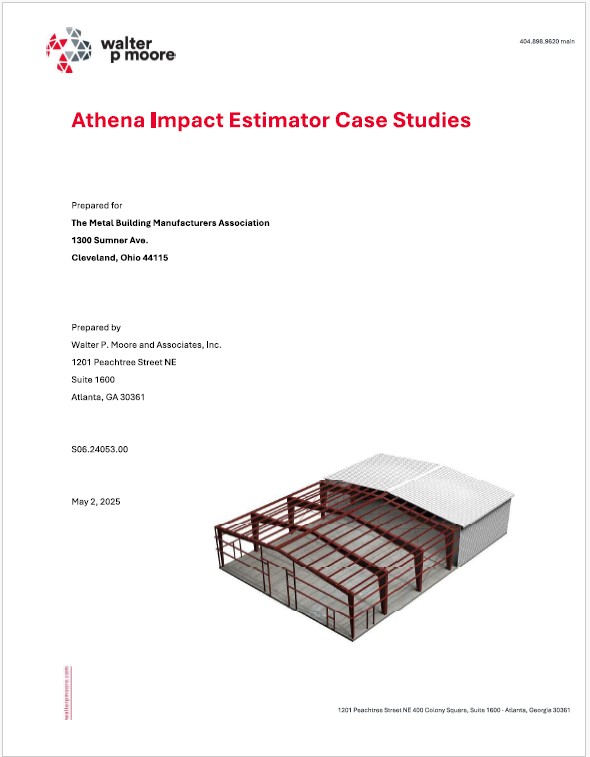THE COMMON DENOMINATOR
What makes a metal building a great choice for energy efficiency and sustainability? A variety of attributes play into the equations.
Custom engineering + material optimization + low impact on the environment = Sustainable solutions
Speed of delivery + cost-efficient materials + long life cycles = Long-term value
Wind, hail and fire resistance + low-combustion materials = Insurance cost reductions
Energy efficiency + low VOCs + recycled/recyclable steel = Planet-friendly
Optimized design ÷ zero material waste = Infinite recyclability
ENERGY CODE COMPLIANCE
Metal building systems can be designed to comply with the energy code requirements anywhere in North America. MBMA offers a wide range of resources to assist design professionals in choosing the best components to meet those codes.

Best Practices to Comply with Whole Building Air Leakage Testing Requirements
Read More
Energy Guide for Metal Building Systems: Code Compliance – Second Edition

COMcheck Frequently Asked Questions for Metal Building Systems
Read More
Energy Code Compliance: A Guide For Metal Building Contractors

Energy Design Guide

Condensation Fact Sheet
SUSTAINABILITY RESOURCES
Environmental Product Declarations (EPDs) disclose the environmental impacts of a product based on the results of a Life Cycle Assessment (LCA). The MBMA EPDs are third-party validated and are International Organization for Standardization (ISO) compliant. These industry-wide EPDs can be used by the design community to show compliance of MBMA Member metal buildings to above-code energy programs like LEED and Green Globes.

Roll Formed Metal Wall & Roof Panels EPD

Secondary Structural Steel Frame Components EPD

Primary Framing EPD
OTHER RESOURCES

Which is the more sustainable building material - wood or steel?

Cool Metal Roofs are Energy-Efficient and Cost-Effective

The Benefits of Steel-vs-Wood for Low-Rise Building Construction

